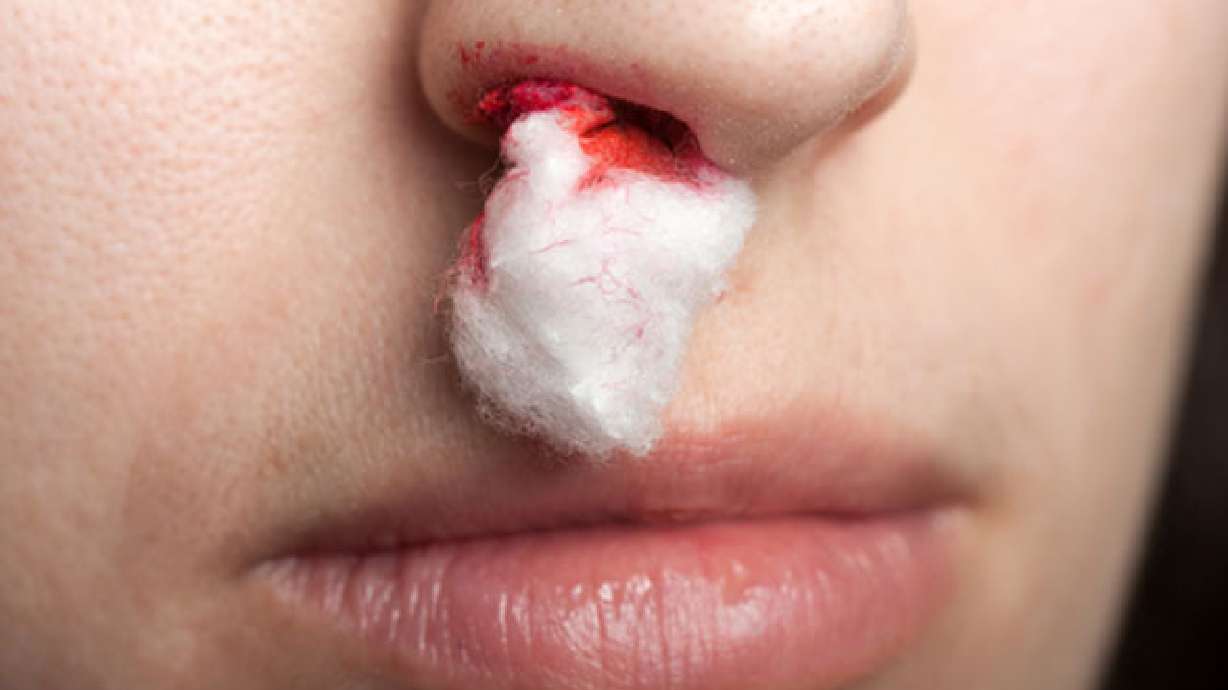Estimated read time: 3-4 minutes
This archived news story is available only for your personal, non-commercial use. Information in the story may be outdated or superseded by additional information. Reading or replaying the story in its archived form does not constitute a republication of the story.
SALT LAKE CITY — One of every seven people in the United States will develop a nosebleed at some point. In a recent article for InteliHealth.com, Dr. Robert H. Shmerling of Beth Israel Deaconess Medical Center said the commonality of the ailment can be attributed to the structure of the nose.
“There is a high concentration of blood vessels just beneath the lining of the nose, which is quite thin. It's easy to dry out, crack, irritate or cut the thin tissue that lines the inside of our noses,” Shmerling said.
A bloody nose originates from one of two locations. Editors at WebMD.com define them as:
- Anterior nosebleeds make up more than 90 percent of all nosebleeds. The bleeding usually comes from a blood vessel at the very front part of the nose. Anterior nosebleeds are usually easy to control, either by measures that can be performed at home or by a doctor.
- Posterior nosebleeds are much less common than anterior nosebleeds. They tend to occur more often in elderly people. The bleeding usually comes from an artery in the back part of the nose. These nosebleeds are more complicated and usually require admission to the hospital and management by an otolaryngologist (an ear, nose and throat specialist).

Nosebleeds tend to occur most often during winter months; in dry, cold climates; and at high altitudes. There are no statistics to prove whether women or men have a higher risk or occurrence of nosebleeds, but there are several biological and lifestyle factors that can increase their frequency.
Non-serious causes:
- Dry air
- Trauma (i.e. getting hit in the nose)
- Continual irritation
- Allergies to aromas
- Ingrown nasal hair
- Common flu and cold
- Deviated septum
Serious causes:
- High blood pressure (though reasoning is unclear)
- Use of blood thinners
- Hemophilia
- Frequent exposure to irritants — including cigarette smoke, sulfuric acid, ammonia and gasoline
- Alcohol and drug use— alcohol use can weaken blood and blood vessels; cocaine use can damage the lining of the nose
- Sinusitis
- Cancers and cancer treatments
Related:
A bloody nose in itself is not harmful; but if it’s tied to some kind of illness or dangerous activity, it can be a signal that something in your life needs to change. In the short term, the following treatments can be very effective in preventing or stopping a nosebleed.
Prevention:
- Using moisture in your nose daily (i.e. Carmex, Vasoline, Vick’s ointment, antibiotic ointment, or Borofax ointment)
- Keep air humidified at all times if possible
- Monitor your medications, especially if you take aspirin on a regular basis or blood thinners
Cessation:
- Apply direct pressure by squeezing your nose so tight it hurts, with no peeking for 15 minutes. Keep your head tipped forward when you do this. If you get too much blood in your stomach, you will throw up.
- Put tissue or a small piece a material in firmly in your nostril; don’t pull it out for 15 minutes.
- If your nose does not stop bleeding after trying the options above, it is clear you’ll need to seek professional medical help.
While an uncontrollable nosebleed is not a true emergency, it does need to be taken care of by a doctor. Rarely do people die from a bloody nose. You may faint, but you will not die.
Suzanne Carlile, "Nurse Suzy," has been a nurse since 1982. Her main focus is critical care and nursing education. She holds a master's degree in nursing, is a Certified Emergency Nurse, and a member of NNSDO Intermountain West Chapter.










